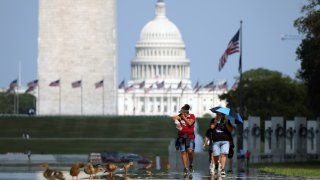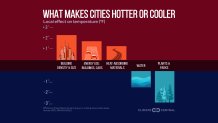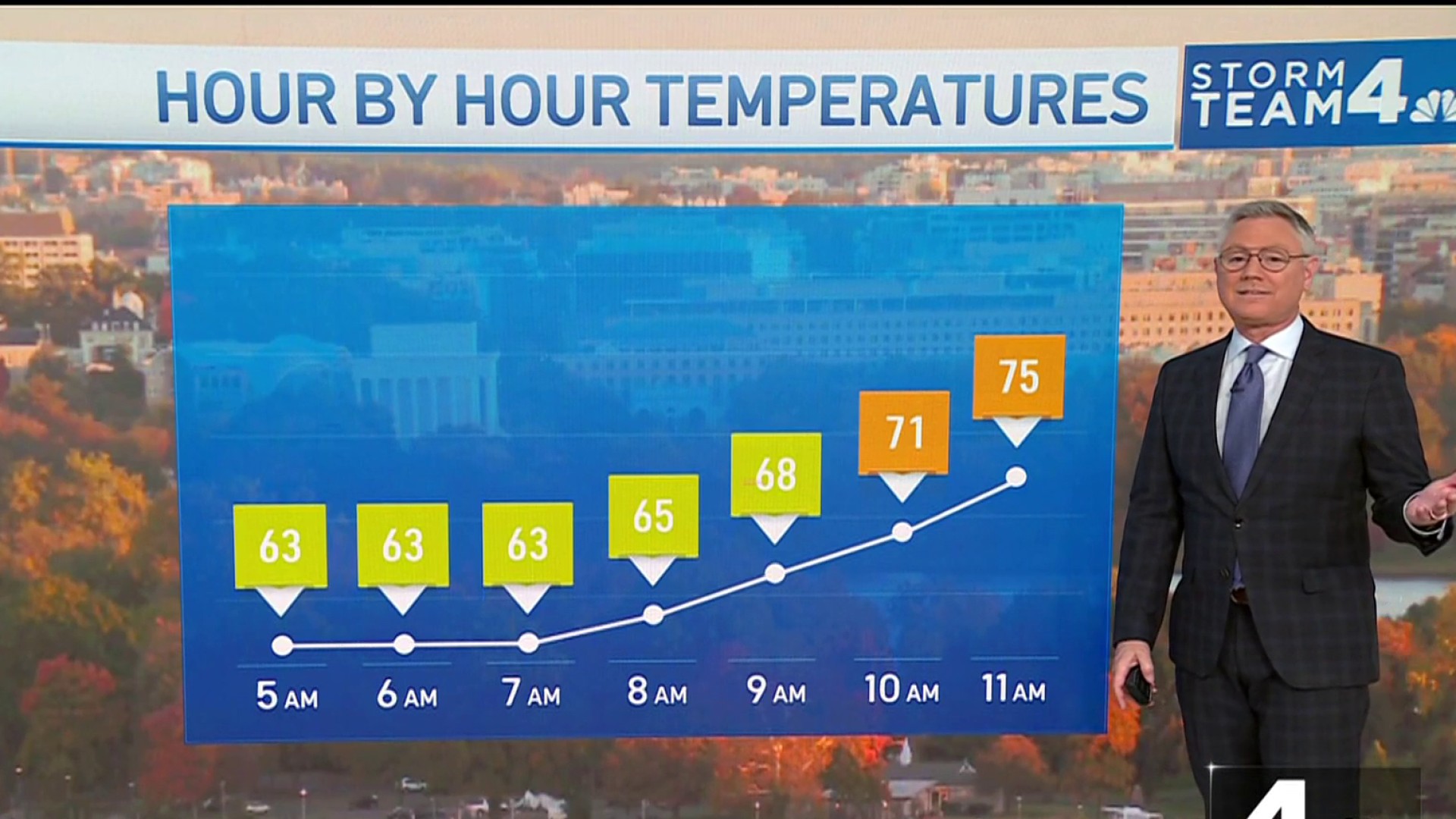
What to Know
- Heat islands occur when urban spots get higher temperatures than the suburbs both during the day and at night
- Asphalt and concrete absorb heat, which increases temperatures
- Downtown D.C. can be up to 10 degrees warmer than average due to the urban heat island effect
If you feel like feel like some spots around the D.C. area are hotter than others, you're not alone — and you're not wrong. It's a real effect, and there's a scientific reason behind it.
Those hot spots are known as heat islands, a "phenomenon generated when urban centers experience higher temperatures than the suburbs or surrounding areas both during the day and at night," StormTeam 4 meteorologist Joseph Martínez explains.
Asphalt and concrete absorb heat, which causes an increase in temperatures.
"This is because, in cities, there are more buildings, more roads, more concrete structures, and these materials absorb heat and more solar radiation compared to green areas that absorb less heat," Martínez told us.

That's why temperatures can be higher in urban centers during the afternoon and even at night.
Weather Stories
"These materials store heat and release it at night," Martínez said.
Where are the worst heat islands in D.C.?
The nonprofit Climate Central released a report last month in which scientists analyzed "how and where urban heat islands increase temperatures in 65 major US cities," including Washington, D.C.
An interactive map on their website shows that downtown D.C. is up to 10 degrees warmer than average due to the urban heat island effect. That also includes Dupont Circle, Foggy Bottom, Columbia Heights and Capitol Hill.
Northern neighborhoods of the District, such as Woodley Park and Brightwood, generally have more trees and other vegetation. But the urban heat island effect lingers in those areas, too, where temperatures can still feel up to 7 degrees warmer than average for the greater region.
Washington DC Urban Heat Hot Spots
Urban heat island intensity (°F) by census block group.
Source: Climate Central analysis based on Sangiorgio (2020) and Demuzere (2020).
Meanwhile, many areas of Northern Virginia and Maryland have milder conditions because there's more vegetation there, as does Rock Creek Park in the District.
"Areas near Rock Creek are cooler due to the proximity to a green, more natural area, compared to other areas with more urban development," Martínez said.
2024 is the hottest summer on record
Last month, D.C. area sizzled under the most intense spell of heat on record, an unprecedented event, according to Martínez. Areas reported a heat index above 110 degrees.
"The heat wave that affected us recently was historic since, for the first time in history, four consecutive days above 100 degrees were recorded," he said.
And heat plus high humidity is back again Thursday, leading the National Weather Service to issue a heat advisory for the D.C. metro area and most of the I-95 corridor. Thursday's heat index could reach 105°.



